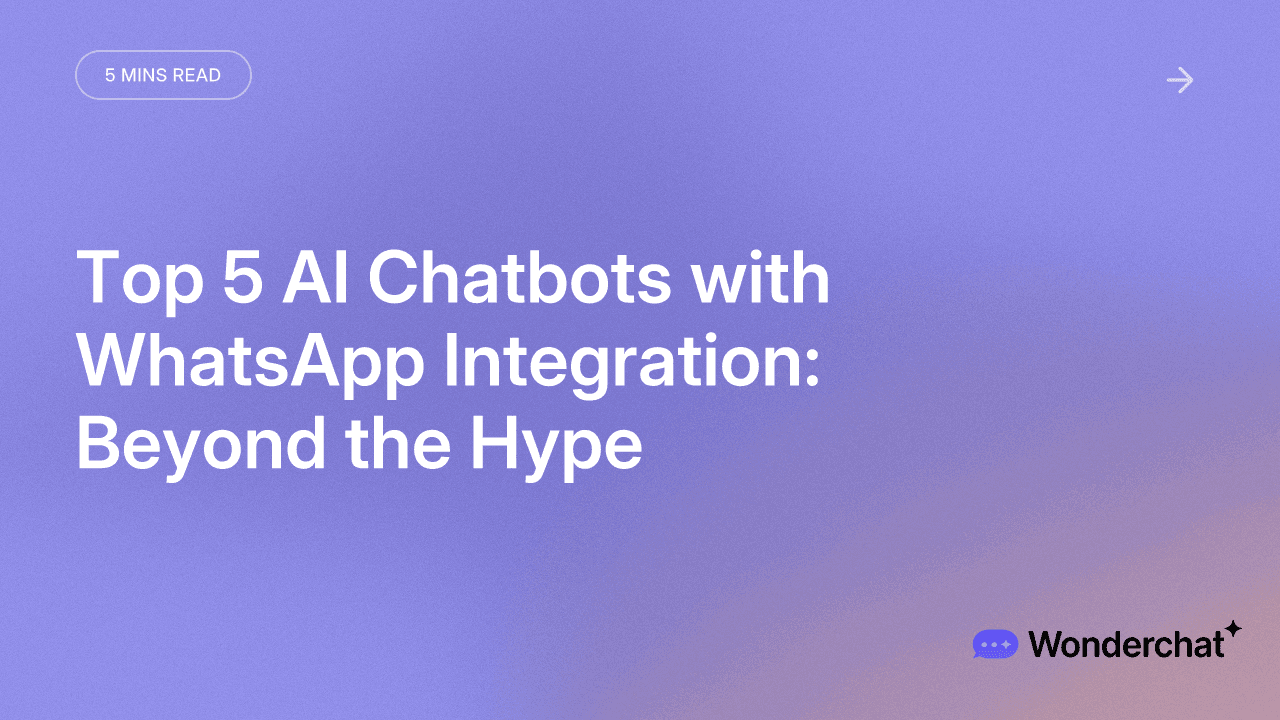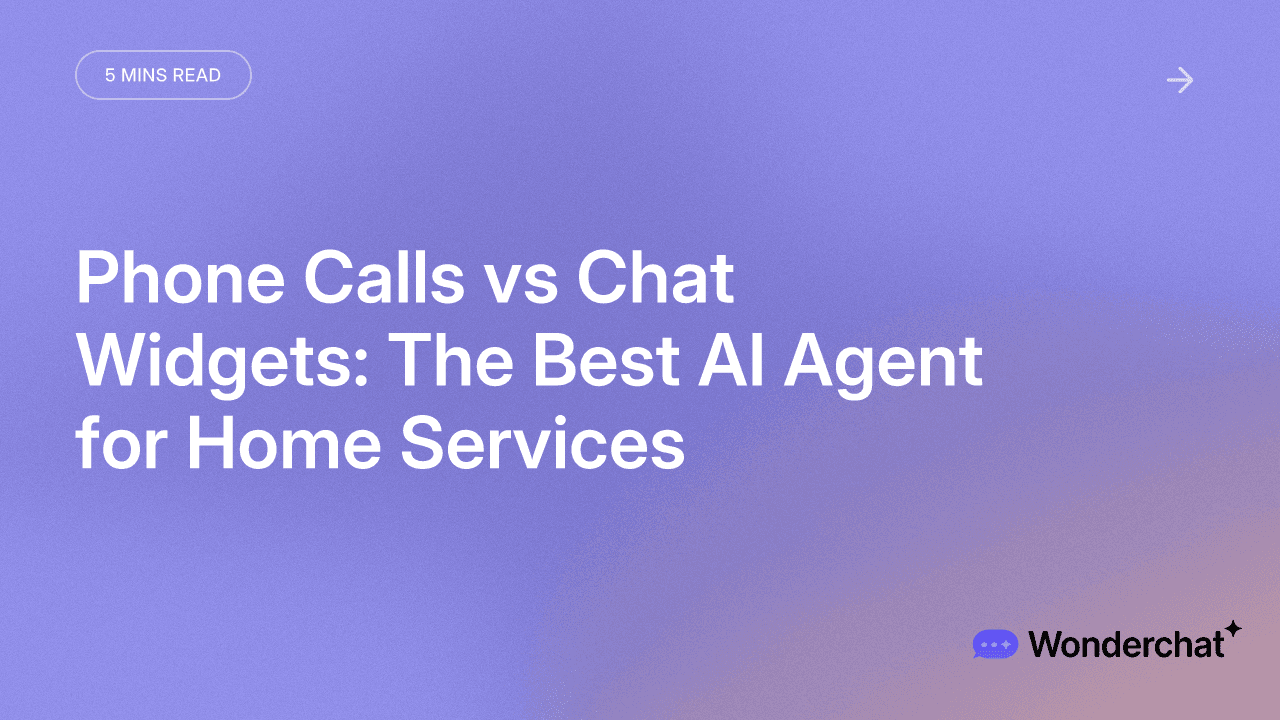Guides
How to Create Your Own Chatbot Without Coding

Vera Sun
Mar 28, 2024
Chatbots have become indispensable tools for individuals, bloggers, and organizations in the contemporary digital world. Since user-friendly platforms and solutions emphasizing simplicity and convenience have been more widely available, creating your own chatbot without knowing any code has become increasingly simpler.
Without needing to learn complicated coding languages, you can start this adventure regardless of your background—small company owner, hobbyist, or just interested in chatbot technology. Fortunately, platforms like WonderChat have revolutionized the landscape by offering intuitive solutions for building chatbots without coding expertise.
They streamline communication processes, enhance customer service, and automate repetitive tasks.
Building a chatbot without coding requires careful consideration of the platform or tool you choose. A few things to consider include the available features, affordability, usability, and compatibility with the message channels you want to employ.
Selecting the Best Chatbot Creation Platform
In the landscape of chatbot development, selecting the optimal platform or tool for creating chatbots without coding is paramount. Wonderchat offers an intuitive platform streamlining the development process while ensuring scalability and efficiency.
When making this crucial decision, prioritize ease of use, seeking platforms with intuitive interfaces and informative guides.
Additionally, consider the feature set offered by each platform, such as analytics dashboards and natural language processing capabilities, ensuring it aligns with your chatbot's requirements.
By navigating these factors thoughtfully, you can optimize your chatbot development process while maximizing its potential for success. Here is a step-by-step guide to creating your chatbot without coding:
Sign Up and Log In
Begin by signing up for an account on the Wonderchat platform and logging in to access the chatbot builder.
Choose a Template
Select a pre-built template that aligns with your objectives, whether providing customer support, generating leads, or facilitating sales.
Customize the conversation flow
Customization will allow your chatbot to be tailored to your identity and you can begin by defining your chatbot's personality, ensuring it aligns with your brand's tone, language, and style.
Utilize a template from Wonderchat to detail the chatbot’s role, traits, and expertise. Focusing on these elements during interactions is crucial to ensure that your chatbot's responses are relevant to your company and its products, avoiding off-topic inquiries thereby enhancing your chatbot's effectiveness and ensuring consistency in your conversation.
Configure your Settings
Map out the primary pathway users may take when interacting with your chatbot. This involves anticipating user inputs, questions, and intents and designing corresponding responses and actions.
Creating a chatbot without coding allows you to use visual tools such as flowcharts or mind maps to visualize the conversation flow and identify potential branching points.
When creating the dialogue trees, aim for simplicity and clarity. Steer clear of lengthy answers and incredibly intricate decision trees that could irritate or confuse customers. Divide the discussion into manageable sections and provide users clear cues and options to help them through each phase.
Personalize Your Bot
An additional crucial component of successful conversational design is personalization. Modify your answers to consider the user's input, context, or past exchanges whenever feasible.
To increase connection and relevance, address users by name, respect their preferences, and provide pertinent recommendations. Adding multimedia components to the conversation, such as buttons, movies, or graphics, can also improve it.
Creating the chatbot without coding can be accomplished by providing visual signals to break up the text-heavy interface and improve the conveying of information. Visual cues can make the interaction more dynamic and engaging.
Analytics data and user input can be used to iterate and improve the flow of your chatbot. To find places that need work, keep an eye on drop-off points, completion rates, and user engagement. Ensure the conversation flow is constantly tested and optimized to meet user expectations and corporate objectives.
Test Your Bot
Before making your chatbot public:
Make sure it functions as planned by running it through a rigorous trial.
Ask friends, colleagues, or beta testers for assistance in duplicating user interactions and locating bugs or usability concerns.
Take advantage of the platform's testing features.
Test Your Bot
After determining that your chatbot is operating as expected, it's time to expose it to your chosen channels. This can involve uploading it to a messaging app, installing it on your website, or tying it to other software programs, depending on your selected platform.
Monitor and Iterate Your Bot
Once you have created your chatbot without coding and have deployed the chatbot, use the Wonderchat platform's analytics features to monitor and iterate your chatbot's performance.
To find areas that need work, monitor indicators like feedback, conversation completion rates, and user engagement. Adjust the functionality and design of your bot in response to user input and evolving business requirements.
Summing Up
Following the above instructions, you may create your chatbot without coding a single line. Whether a person or organization wants to increase user engagement, automate customer support, or speed up sales processes, a chatbot without code can assist.
Designing the flow of your chatbot's conversation is akin to mapping out its brain. It involves creating a logical interaction sequence that guides users toward their desired outcomes. It is also essential to consider the platform's scalability and pricing structure. Assess your budget and growth projections to determine which pricing model aligns with your needs.
Wonderchat allows you to achieve seamless integration with messaging platforms. Which is crucial for maximizing your chatbot's reach and engagement. It offers effortless integration options with popular channels like Hubspot, Calendly, WhatsApp, and Slack, enabling you to seamlessly deploy your chatbot across multiple platforms.
To make your chatbot work, an awareness of the subtleties of each stage of creation and the application of best practices will allow you to create a no-code chatbot that accomplishes your goals and makes users happy and engaged.

